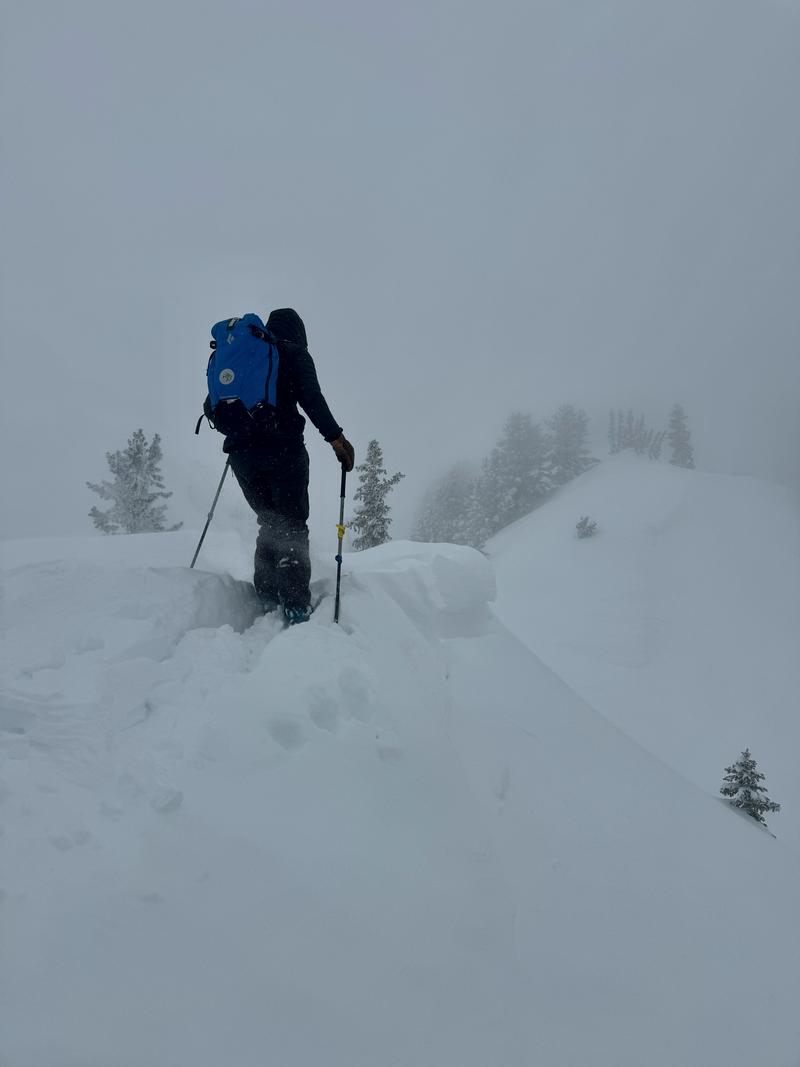Forecast for the Salt Lake Area Mountains

Issued by Nikki Champion for
Friday, March 15, 2024
Friday, March 15, 2024
The avalanche danger is CONSIDERABLE at upper elevation terrain facing northwest, through west, through southeast, where easterly winds will continue to form unstable slabs of wind-drifted snow throughout the day. The remaining upper and all mid-elevation slopes have a MODERATE danger, where periods of heavy snowfall and elevated winds have created heightened avalanche conditions today.
Outside the wind zone, both loose snow and slab avalanches may be possible within the different layers of new snow from the past few days. The elevated winds should keep the wet snow at bay, but when the strong sun comes out, there could be some rollerballs, pinwheels, and small point releases.
The avalanche danger is LOW at low elevations.
Easterly winds are unusual for the Wasatch, and with unusual weather patterns come unusual loading patterns. Pay attention to changing or abnormal conditions throughout the day. Making conservative choices isn't a bad idea when there is uncertainty.
Easterly winds are unusual for the Wasatch, and with unusual weather patterns come unusual loading patterns. Pay attention to changing or abnormal conditions throughout the day. Making conservative choices isn't a bad idea when there is uncertainty.

Low
Moderate
Considerable
High
Extreme
Learn how to read the forecast here






